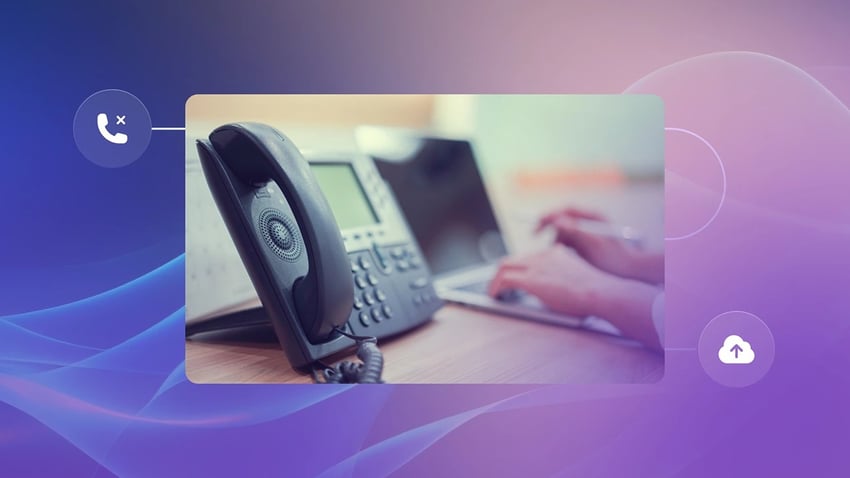From boardrooms to break rooms, from high-rise headquarters to home offices, one thing is clear: Good communication is the cornerstone of a great business.
We all want to improve the impact of our messaging, but with so many business communication channels, technologies, and team preferences, which are the right communication channels for your brand?
Effective business communication boils down to these four key factors: understanding nuance and needs, using technology wisely, managing how teams work together, and the basics of human psychology. Your company needs to find the right mix of these elements to succeed.
See what Nextiva can do for your CX
Short on time? Experience our AI-powered contact center in minutes through quick, on-demand demos.
Let’s explore nine of the best communication channels that will help put your business on the path to success.
What Is a Communication Channel?
Communication channels are the medium through which information is transmitted within an organization (employees, managers, owners) or its external stakeholders (customers, vendors, investors). These channels are essential for conveying ideas, sharing information, making decisions, managing operations, and achieving organizational goals.
These communication channels are typically categorized as external or internal communications, depending on the recipient of your message:
- External channels are meant for communicating with customers, partners, prospects, and clients outside of your company.
- Internal channels facilitate communication among employees, leadership, and other team members.
And these channels can then be sub-categorized based on their formality, direction, purpose, and technology used.
Business communication stats
Communication is the key to maintaining productivity, company culture, employee engagement, and customer satisfaction. Just take a look at these stats:
- Over 95% of workers agree that communication impacts their effectiveness in the workplace.
- Over 80% of U.S. workers cite employee communication as the top factor in building trust between a company and its employees.
- Nearly 70% of employees say productivity would rise with better communication processes.
- The repercussions of weak workplace communication include failure to complete projects, low employee morale, missed performance goals, and lost sales:
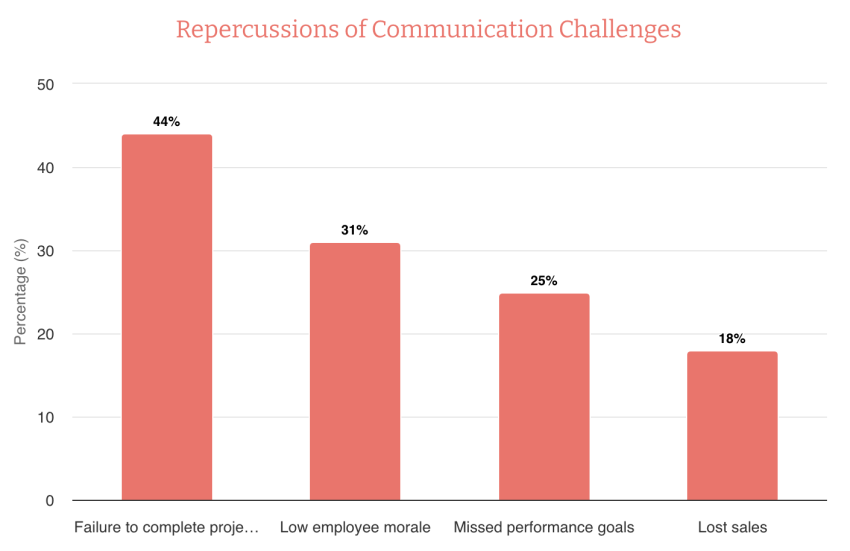
Preferred communication methods
Workplace communication channels fall into two distinct categories: synchronous and asynchronous channels.
👉 Synchronous communication is when the information exchange happens in real time, where everyone must be present and focused on the dialogue to gain a shared understanding of the task at hand. Phone calls and meetings are examples of synchronous communication.
👉 Asynchronous communication is when information is delivered preemptively so everyone can consume and act on the information independently of real-time conversations. Email, recorded videos, and blog posts are examples of asynchronous communication.
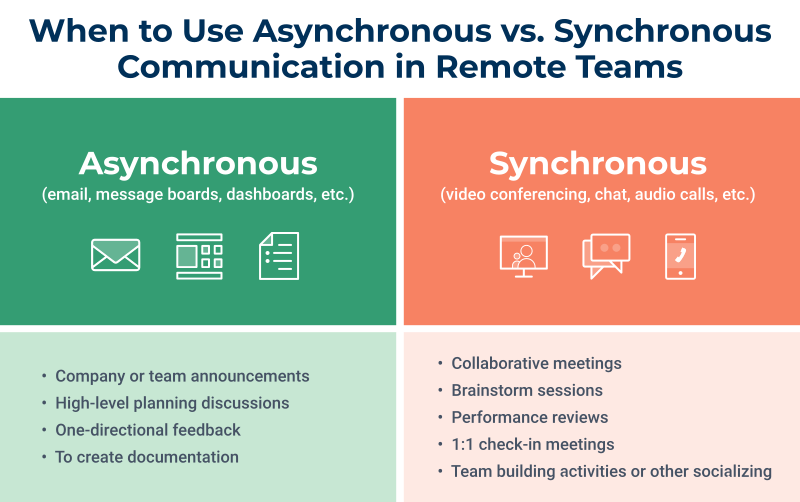
Combining these communication methods achieves the best results.
With work-from-home situations increasing to 58% of the workforce and employees spending an average of 20 hours a week using collaboration tools, effective communication is the top priority for productivity:

In research conducted by Grammarly, a new business communication ecosystem is taking shape:
Employees are communicating 18% more in writing and prefer using asynchronous communication channels.
Business communication challenges
Business communication challenges have become more pronounced in the workplace lately, where the complexity of tasks and the diversity of the workforce (including in-office and remote workers) means that clear and effective communication strategies are more important than ever.

Because of the hybrid work options, misunderstandings as a result of unclear messages can lead to errors as well as frustration among both employees and customers. In fact, leaders are noticing the connection between poor communication and its impact on their bottom line, caused by decreased productivity, missed deadlines, and increasing costs.
Top Communication Channels (With Pros & Cons)
From the speed of instant messaging to the formality of email to the efficiency of VoIP phone calls, let’s explore the pros and cons of our most essential channels.
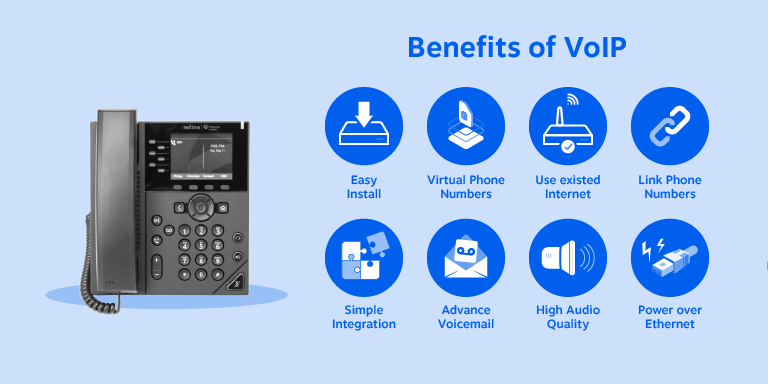
1) In-person communication
Face-to-face communication fosters connection and builds trust. Essential for team-building and key meetings, in-person interactions allow people to communicate in several ways: listening, verbal communication, and nonverbal communication.
Due to the highly engaging nature of in-person meetings, people are more attentive and free from the usual distractions of phone and video calls.
In-office meetings, meetups, and conferences are ideal locations to get together with your employees and contacts, helping you make human connections in an increasingly digital-only workforce.
Pros of in-person communication:
- Strong relationships: In-person connections are unbeatable in building long-lasting business relationships.
- Clear communication: Misunderstandings are reduced due to the addition of non-verbal cues.
- Immediate feedback: Face-to-face conversations encourage quick feedback on topics of discussion.
Cons of in-person communication:
- Cost: Costs of travel, accommodations, food, and entertainment can add up quickly.
- Resource use: Arranging to meet in person is more time-consuming compared to connecting virtually.
- Geographic limitations: In-person meetups are inconvenient for global teams and clients.
2) Video conferencing
Whether your employees work from home or in-office to engage with clients across the globe, video conferencing is a communication channel that connects distributed teams.
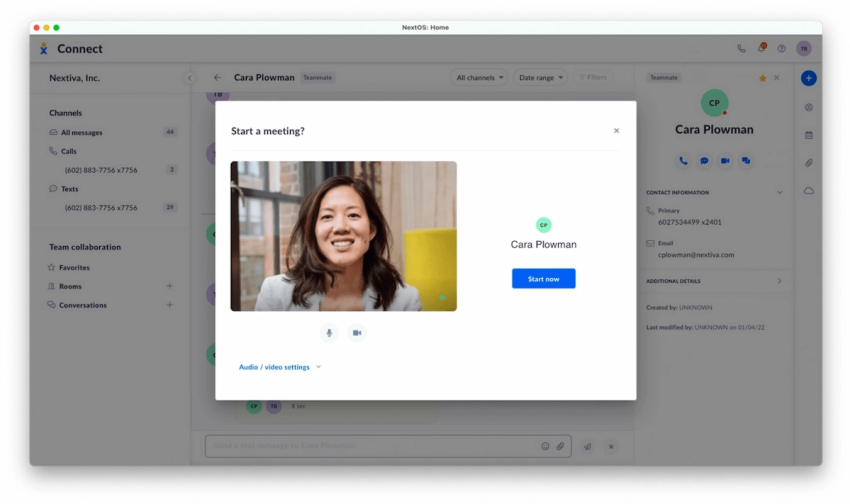
Consider it the next best thing to in-person communication. It allows attendees to take in facial cues, convey human emotion, make eye contact, and understand someone’s unique personality.
Popular video conferencing software includes Zoom, Google Meet, and Nextiva. These high-performance tools let teams conduct video meetings, share their screen, live chat with attendees, and more.
Pros of video conferencing:
- Global reach: Connect with clients, partners, colleagues, and customers anywhere around the world.
- Time and money savings: Reduce the number of resources invested in face-to-face meetings (e.g., dinners, hotels, and coffee).
- Recordable and transcribable: Easily record or transcribe your meeting for future reference.
- Communication subtleties: Avoid misunderstandings and build rapport by observing social cues through video.
Cons of video conferencing:
- Connectivity requirements: Attendees must have a strong Internet connection for high-quality, reliable meetings.
- Less personal: A virtual meeting is less personal than a face-to-face meeting.
- Screen fatigue: An overload of virtual meetings can cause screen fatigue. Common symptoms include eyestrain, headaches, and difficulty concentrating.
3) Phone calls
Phone calls are quick, direct, and immediate forms of communication. They’re personal and practical, making them ideal for those times when you need answers fast.

And remember: A virtual phone system works across many different devices.
They help teams cut to the chase of an email thread and avoid the hassle of scheduling virtual meetings, while still providing a human element to the connection. That’s why 67% of mobile workers report increased productivity and problem-solving by placing a simple call.
As the unsung heroes of business communication, phone calls are relatively simple. Participants need access to a classic landline, a cell phone, or a VoIP service.
Pros of phone calls:
- Personal touch: Allows for subtleties such as voice inflections and pauses.
- Quick and convenient: Ideal for urgent communication or questions that are simple and require the input of a specific person.
- Accessibility: Most people already have access to a phone.
- Low-cost: Phone systems are budget-friendly, with VoIP saving businesses up to 60%.

Cons of phone calls:
- Impersonal: Non-verbal communication cues such as body language and eye contact are unavailable.
- No visuals: Lack of visual context can lead to misinterpretation of tone or messaging.

4) Text messaging
Text messages in business are quick, efficient, and unobtrusive forms of communication. They’re an ideal choice for quick team updates, simple questions, and “FYI” moments that don’t require a long response.
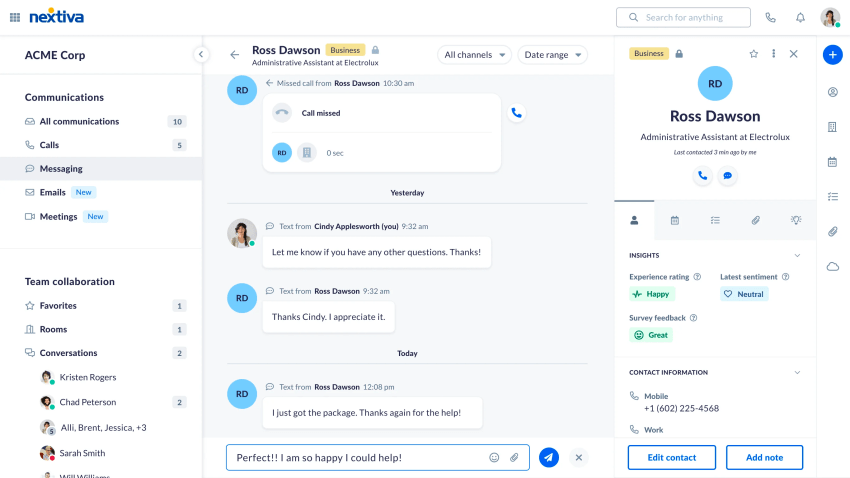
Businesses are also increasingly adopting SMS as a key communication channel for their customers, thanks to its exceptionally high open rate of 98% (while email has an average 20% open rate). This high engagement rate makes SMS a no-brainer for many companies, with 90% of them reporting successful SMS marketing campaigns.
A basic text messaging app such as WhatsApp, Facebook Messenger, standard messaging apps on cell phones, or a VoIP-based service such as Nextiva’s is all that you need to get started with this form of communication.
Pros of text messaging:
- Speed, efficiency, and accessibility: Message delivery happens in real time, improves collaboration with teams and builds connections with customers. What’s more, nearly everyone has access to a mobile phone with a text messaging app.
- Minimally disruptive: Phone calls and virtual meetings often disturb a person’s workflow. Text messages are minimally disruptive to their schedule.
- Record-keeping capabilities: Unlike phone calls, text messaging allows you to save a detailed archive of your conversation.
Cons of text messaging:
- Lacks nuance: It’s easy to misinterpret tone, meaning, and modern texting abbreviations.
- Informal communication: It may not be suitable for all business messages, especially high-stakes communication.
- May feel intrusive: Too many text messages at certain times of the day may feel intrusive for some.
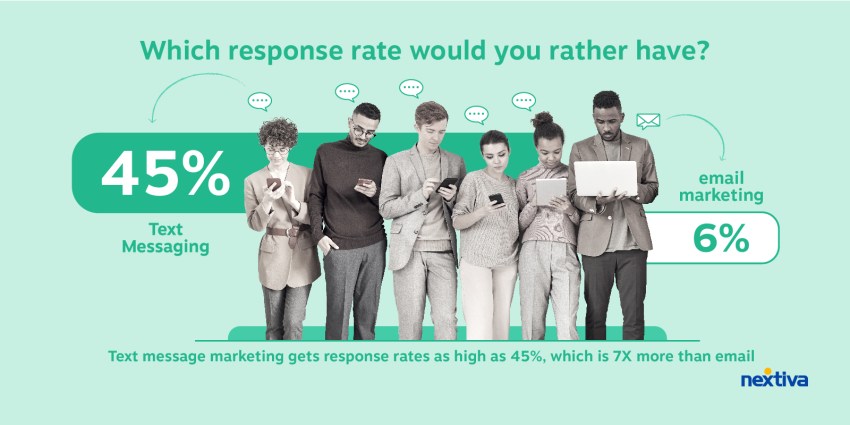
5) Recorded video
Virtual meetings often lack the time and depth needed to properly convey your message; a recorded video can help fill in the gaps.
Recording a video, with or without visuals, lets you communicate all the points you need to cover while allowing the recipient to keep the recording for long-term reference.
Video was once a complex medium to produce and edit, but now, thanks to revolutionary editing and hosting platforms such as YouTube, Vidyard, and Loom, you can quickly produce and share video within seconds.

Pros of recorded video:
- Convenience: Record your message once and share it with as many recipients as you want. Recipients can view the video on their own schedule.
- Reusability: Produce one video, and send it or edit it multiple times if needed. It’s ideal for educational purposes.
- Personalization: Customize the recording to include unique references for the viewer, increasing trust and heightening the effectiveness of your message.
Cons of recorded video:
- Lacks interaction: Video lacks the two-way engagement and authenticity needed to form strong relationships.
- Takes time: More complex recordings may require more time to produce, film, and edit.
- Requires editing skills: Whether you’re using your mobile phone or producing a slick video, editing skills may be required to get the final cut just right.
6) Team chat
Team chat platforms have replaced email as the main method of communication for many teams, with nearly 80% of Fortune 100 companies relying on these apps, like Slack, as part of their office communications tech stack.
Less formal than email, team messaging platforms nurture a team atmosphere online, promote a fast-moving business culture, and boost collaboration capabilities.
Leading tools such as Microsoft Teams, Slack, and Nextiva are digital hubs for teams that need a place to chat, share information and files, and keep the business ball rolling quickly.

Pros of team chat:
- Instant communication: Much like text messaging, team chat facilitates quick responses to communication and requests.
- Improved collaboration: Easily share files, comments, and ideas in real time.
- Mobility: With desktop and mobile apps, modern team chat tools are accessible anywhere at any time.
Cons of team chat:
- Informal communication: Unlike email, team chat is seen as a less formal communication channel and can appear less professional.
- Distracting notifications: A constant stream of notifications can inhibit daily productivity.
- Missed messages: Within larger teams, missing messages are a possibility given the high number of daily notifications.
7) Email
Email is the reliable digital workhorse of business communication, with workers receiving an average of 65.5 emails per day and sending 24.6 emails per day.
Written channels are ideal for sending detailed messages, communicating with formal contacts, and maintaining clear records of business-related conversations.
Although email security has greatly improved (end-to-end encryption, two-factor authentication, VPNs), sending sensitive business information via email is not advised.
The evidence against email can be overwhelming: 81% of global organizations have experienced an increase in email phishing attacks in the last couple years, and 94% of organizations fell victim to these traps in 2022.
Classic tools such as Gmail, Outlook, and Yahoo Mail are giant email platforms that offer secure and reliable features for businesses of all sizes.
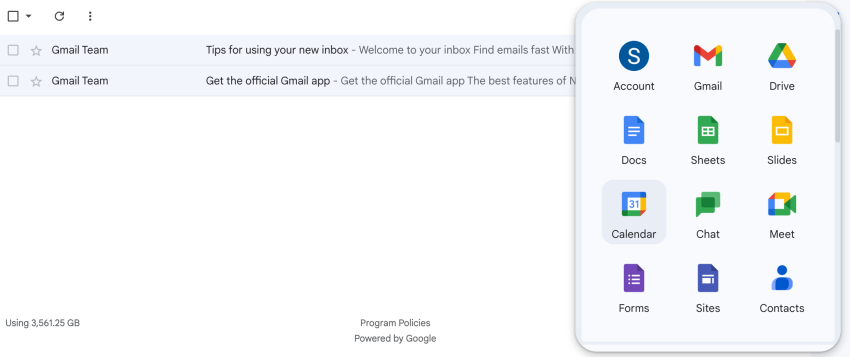
Pros of email:
- Accessible: Email works on various common devices, making it a flexible and convenient form of communication.
- Widely used: Email is a universally accepted form of digital business communication, and nearly everyone is comfortable with it.
- Professional: Email is viewed as a formal and professional means of communication that is suitable for all types of business correspondence.
Cons of email:
- Unsafe: Workers can easily fall prey to phishing attacks and other email scams that can compromise sensitive business information.
- Unwanted: Business inboxes are often overwhelmed by spam emails.
- Not secure: Without appropriate encryption, emails are vulnerable to unauthorized interception and place sensitive business information at risk.
8) Social media
Social networks are important communication channels that allows businesses to spark and foster new relationships online.
Whether you’re creating connections with new customers, engaging with potential clients in the comments, or having longer conversations via direct messages, social media conversations are another way for businesses to build trust, communicate brand values, and engage with audiences.
For many businesses, social media platforms such as LinkedIn, X, Facebook, Instagram, and TikTok allow them to connect with a new type of customer. What’s more, the casual nature of the channels adds an authentic component that’s unique to the platforms.

Pros of social media:
- Direct engagement: Bypass connection barriers by reaching out directly to your target client or customer via their social page.
- Brand and authority building: Create content and conversations that cement your authority and communicate your brand story to a wide audience.
- Global reach: Interact with existing and potential customers and clients around the world.
Cons of social media:
- Subject to public backlash: Negative conversations in the comments can backfire and create a public relations nightmare.
- Resource intensive: Social media requires a constant stream of content to grow and maintain visibility with your audience.
- Low visibility: Confusing social media algorithms may prevent your content from reaching the right audience.
9) Blogs
A blog is a unique way to explore business-related topics, showcase expertise, and build a community among your most loyal customers, clients, or employees.
You can start blogging by first selecting a niche related to your business. Write blog posts that will intrigue your target audience, solve their biggest challenges, or instill a greater sense of community.

Examples of blogging that businesses may explore include company blogs and internal team blogs.
Pros of blogs:
- Thought leadership: Few communication channels build authority quite like long-form blog content.
- Online visibility: A public blog with an effective SEO strategy will boost your website’s attractiveness to search platforms such as Google.
- Lead generation: Value-driven blogs with persuasive calls to action can be effective tools for your business’s lead generation strategy.
Cons of blogs:
- Resource intensive: Consistent blogging requires weekly long-form content that is costly and time-consuming to produce.
- Slow results: Seeing the results from your high-quality content can take weeks if not months.
- Content Volume: Growing a blog requires consistent content output from week to week.
Related: Top 20 Business Communication Apps for Your Team
How to Choose the Best Communication Method for Your Business
When selecting one or more communication tools, consider a few factors before making your choice. Ask yourself:
- How much do you and the recipient trust the communication channel?
- What is the intended impact of your message?
- Are there privacy and security concerns?
- How quickly would you like it delivered?
Take note of your objectives, but also consider how a chosen medium and message combination may impact your recipient. Will you receive the reply you’re expecting? Will it impact your business relationship positively or negatively?
Taking stock of these key points facilitates decision-making when it comes to shaping your company communications.
Here are some key factors to keep in mind when choosing the right communication channels:
🤝 Trust and familiarity
Consider how familiar you and your recipient are with the chosen channel. A common medium that you use frequently can enhance trust and may lead to more effective communication down the road.
📨 Message impact
Each platform has its strengths and limitations when conveying tone of voice, urgency, clarity, professionalism, and authority. Does the tone of your message match up with the channel you selected?
Reserve sensitive topics for email or face-to-face communication, and deliver quick updates via instant messaging.
🔒 Privacy and security
How sensitive is the information you’re sharing? Platforms that offer encryption, two-factor authentication, and strict data protection are crucial for confidential communications.
Privacy and security are particularly important for companies dealing with sensitive personal data, intellectual property, or financial details.

📈 Speed and scalability
Delivery speed can sometimes make or break a business deal. Having access to channels that encourage immediacy and responsiveness is essential in certain business cases.
It’s the same for scalability. Small businesses may function well using only email at first. As they grow, more sophisticated platforms may make more sense for their complex needs.
For global teams working across several time zones, a platform that prioritizes asynchronous communication tools may work best.
Best Practices for Effective Communication
With a growing number of companies maintaining remote work, best practices for clear and productive communication are very important.
Here are several best practices that in-office, hybrid, and remote-first companies can adopt to manage their communication and simultaneously boost their productivity:
- Distribute your message across multiple channels: Having different types of communication channels increases the impact of your message, meets more of your team’s varied communication needs, and aligns your message and your recipient with the right channel.
- Use a single business communication platform: Choosing an all-in-one business communication platform takes the stress out of managing the security and privacy demands of multiple platforms. Increase engagement and productivity by having all of your communications in one central hub.
- Opt for asynchronous communication for efficiency: Asynchronous communication tools (email, recorded video, team chat, chatbot, etc.) allow team members or clients to consume and respond to messages at their own pace, making work more enjoyable.
- Tailor communication to the audience: Understand the needs, preferences, and cultural backgrounds of your audience to tailor your message accordingly. For instance, older generations may prefer phone calls or emails over social media messages. This ensures that the message is received as intended and can significantly improve engagement and understanding.
The Best Solution to Streamline Your Communications: Nextiva
Selecting the best communication channels for your business is less about choosing the shiniest tool and more about determining the ideal channel mix for your specific needs.
The right communication channels and project management tools vary from business to business. Some key points to consider include privacy and security requirements and the speed of delivery.
Selecting too many tools isn’t ideal, either.
That’s why an all-in-one platform like Nextiva is a great option for managing your business communication. With a variety of channels in one centralized platform, Nextiva simplifies the task of managing your business’s overwhelming number of conversations.
As burnout rates escalate and corporate wellness is prioritized, asynchronous communication tools are now essential. Allowing team members to consume information and respond to messages at their own pace reduces distractions and increases productivity — a win-win for everyone!
Related: 23 Marketing Communication Tools You Need in 2024
ONE communication tool for your team
Get a cloud-based VoIP service with superpowers. Nextiva is your destination for flexible communications.
Business Communication Channels FAQs
The most effective communication channels depend on the message and its recipient. There is no one-size-fits-all answer to the best communication channels for every business. Phone calls, emails, video conferencing, and team chat platforms rank among the most efficient communication tools for active global teams.
Remember, the most effective tools are those that are familiar, strengthen trust, emphasize privacy and security, and suit the purpose of the message.
The Internet has completely transformed the way businesses operate and communicate, making it easier and more efficient to connect with clients and customers around the world. Cloud-based tools such as email, VoIP, virtual meetings, instant messaging, and social media make it quick and easy for businesses to build relationships with people across multiple time zones.
Effective management of business communication begins by establishing a clear strategy and choosing the right tools for your company. If necessary, provide training to team members who are unfamiliar with your tool stack.
Broadly speaking, these are the main communication channels:
Written Communication Channels: This includes emails, memos, reports, and documents. In many organizations, these are the backbone of formal communications, providing a record of messages and decisions.
Voice Communication Channels: This encompasses face-to-face meetings, telephone calls, and video conferencing. Direct communication through these channels allows for immediate feedback and clarification of messages.
Electronic Communication Channels: Instant messaging and email fall into this category, enabling quick dissemination of information and facilitating both formal and informal communication channels within an organization.
Non-Verbal Communication Channels: This includes body language, gestures, and facial expressions that can enhance or contradict verbal messages. Although not a direct channel in the traditional sense, it plays a crucial role in understanding and interpretation.
Visual Communication Channels: Charts, graphs, infographics, presentations, and even video help in conveying complex information more effectively than verbal or written descriptions alone.
But more specifically speaking, in business, the main communication channels are: phone, text, email, video, and social media.
In business, communication channels can be broadly categorized into:
Internal Communications: These channels facilitate the flow of information within an organization and include team meetings, internal emails, intranets, and newsletters.
External Communications: This involves interaction with individuals and entities outside the organization, such as customers, partners, and stakeholders, through press releases, social media, advertising, and customer service platforms.
Formal Communication Channels: These are officially sanctioned paths for information flow, such as reports, official emails, and meetings. They are essential for maintaining transparency and order within an organization.
Informal Communication Channels: These include casual interactions among employees, such as water cooler conversations, instant messaging, and other unofficial communication channels. They play a significant role in building relationships and fostering a positive workplace culture.
Digital Communication Channels: With the advent of technology, digital channels like social media, websites, and blogs have become crucial for brand communication, marketing, and engaging with a broader audience.
Ten ways that businesses can communicate in a way that customers expect and prefer are:
Emails: A written communication channel that serves as an effective communication channel for both internal and external messages.
Meetings: Both in-person and via video conferencing, meetings are a direct communication method for discussing ideas, making decisions, and providing updates.
Reports: Detailed written documents that convey information, analysis, and recommendations.
Presentations: A visual and oral communication channel used to inform, persuade, and engage audiences.
Newsletters: Regularly distributed written communications to keep stakeholders informed about company news, updates, and insights.
Instant Messaging: A quick and informal communication channel for real-time conversations within an organization.
Social Media: A digital platform for engaging with customers, promoting brand messages, and receiving feedback.
Corporate Intranets: An internal digital platform that facilitates information sharing, collaboration, and corporate culture building.
Press Releases: Official statements issued to the media to announce significant developments, enhancing transparency and public relations.
Feedback and Surveys: Mechanisms for gathering insights from employees, customers, and stakeholders, crucial for continuous improvement and engagement.

















 Business Communication
Business Communication 











